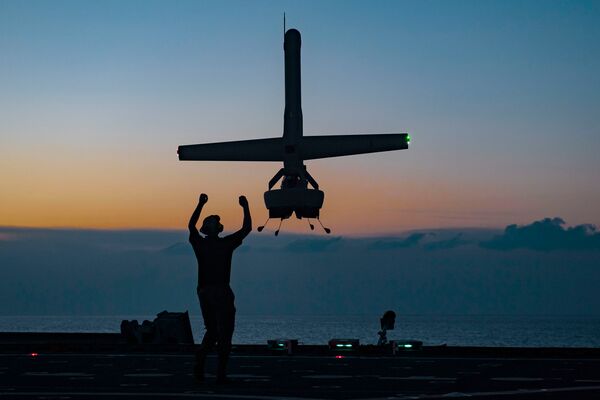
The V-Bat UAV, shown here during testing, is becoming the UAV of choice for US forces. (US Navy)
Military planners and operators are beginning to consider unmanned surface and aerial vehicles in a more operational light given recent successes in experiments and in the battlespace, according to defence analysts.
One case in point is the Long-Range Unmanned Surface Vessel (LRUSV) the US Marine Corps (USMC) plans to use as a semi-autonomous vessel for extended travel and transporting loitering munitions that accurately track and destroy targets on sea or land and serve as an intelligence, surveillance, and reconnaissance (ISR) platform, according to Bryan Clark, senior fellow and director of the Center for Defense Concepts and Technology at Hudson Institute.
“Marines are looking at that for unmanned logistics,” Clark told Janes on 31 March in an interview in advance of the Navy League Sea-Air-Space global maritime exposition held from 8 to 10 April in National Harbor, Maryland.
“They want to move materiel between the islands for the MLRs [Marine Littoral Regiments],” Clark said.
“Some people thought the LRUSV was another experiment, but the marines are really all in. It's moved into the world of programme management. It's not just an RDTE [research, development, test, and evaluation] thing anymore.”
For more information about planned US Navy investments in unmanned platforms, please see Pentagon budget 2025: US Navy seeks more funding for unmanned vessels.
Regarding unmanned aerial vehicles (UAVs), Clark pointed out the USMC's plan to use MQ-9s for electronic warfare (EW) and wide-area surveillance.
However, Clark also noted that earlier small, fixed-wing launched or ‘thrown' aerial vehicles are being retired and the US land forces are going with the V-BAT vertical take-off and landing (VTOL) unmanned aircraft systems (UASs).
Looking to read the full article?
Gain unlimited access to Janes news and more...







